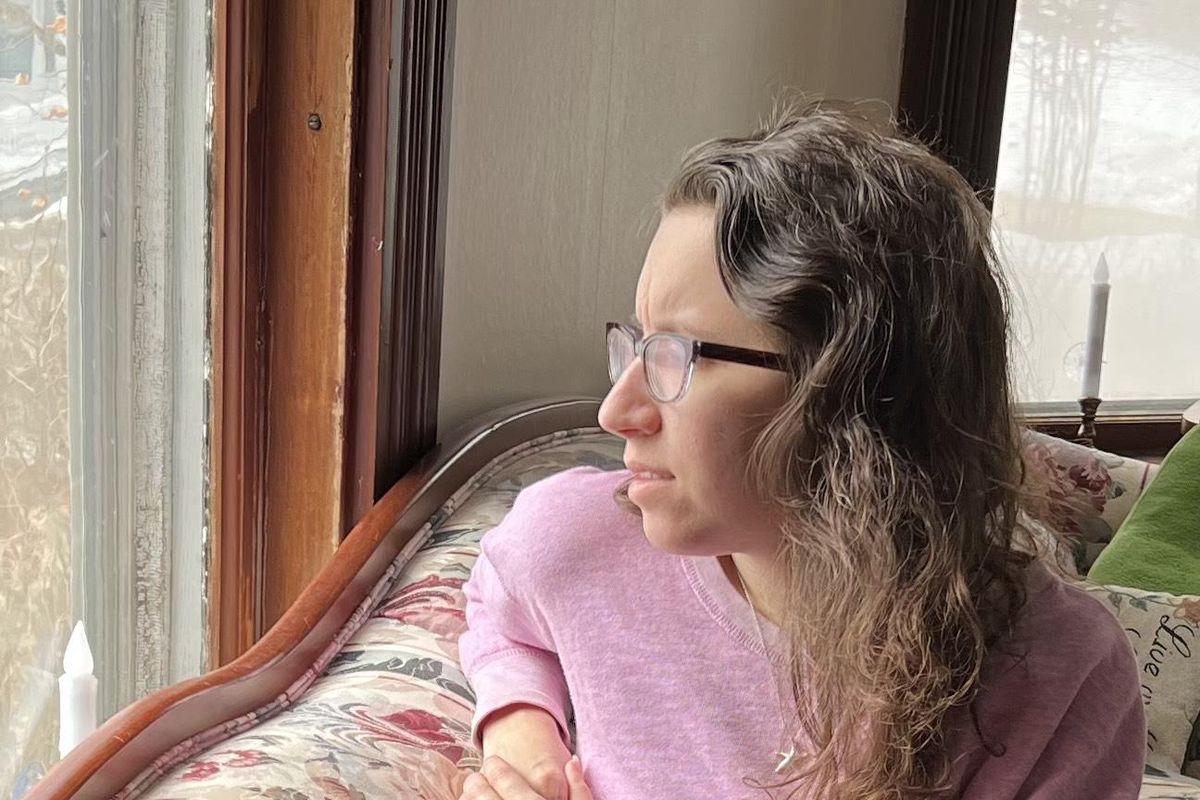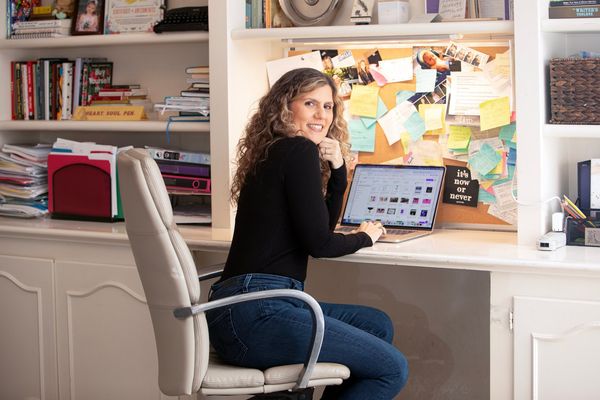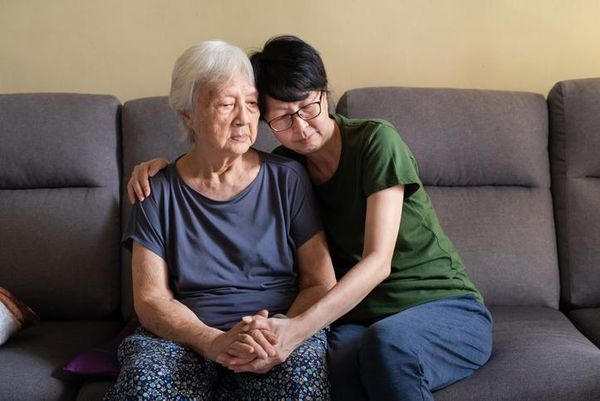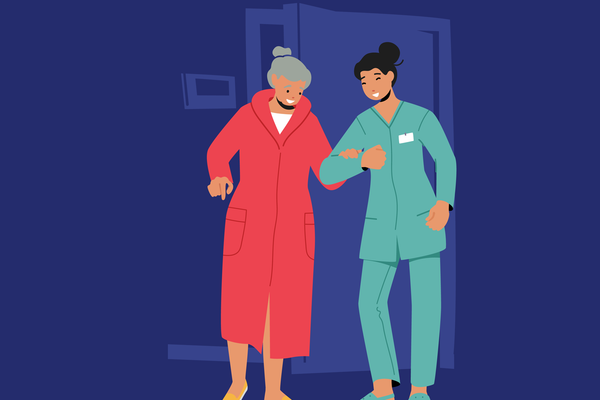February 18 is National Caregivers Day.
I get the text when I’m at work, trying to focus on a project I’ve barely made any progress on all day. “I’m in the ER,” my husband, Lee, wrote. “But don’t worry, I’m OK.”
My hands shake on the drive over to the hospital, but I’m less anxious than I have been in months. Lee’s trip to the ER was close to a year in the making as his already-severe asthma intensified and his reluctance to visit the hospital because of the Covid-19 pandemic grew.
In the months leading up to Lee’s hospital stay, I had gotten used to getting up in the middle of the night with him as he gasped for breath. I’d grab inhalers and prop him up as he pumped the steroids into his system. I carried things up and down the stairs for him because a simple climb sent him into a raging asthma attack. I had tried my best to be a supportive spouse and let him dictate his medical care while at the same time encouraging him to get help for a condition that was taking up an increasing amount of space in our lives.
Lee’s ER visit and subsequent hospital stay solidified what I’d known for months: In addition to being his wife I was also his caregiver, and we both had to get used to the way it would change — and strain — our relationship. After Lee was admitted because of a low blood oxygen level and difficulty breathing, I spent the first night in our home alone. I couldn’t bring myself to sleep in our bedroom and instead laid down on the couch where I let myself cry for the first time that day.
I was worried about Lee, of course, but at the same time, a guilty thought ran through my mind: We’re only in our 30s. It isn’t supposed to be this hard. Not yet.
When Lee and I met, we instantly connected over a love of the outdoors. Our first dates were filled with mountain hikes and that winter I introduced him to snowshoeing. It seemed like we were always on the move. The pandemic stymied our adventures, but we continued to take to the woods where we felt the most connected to the world — and each other.
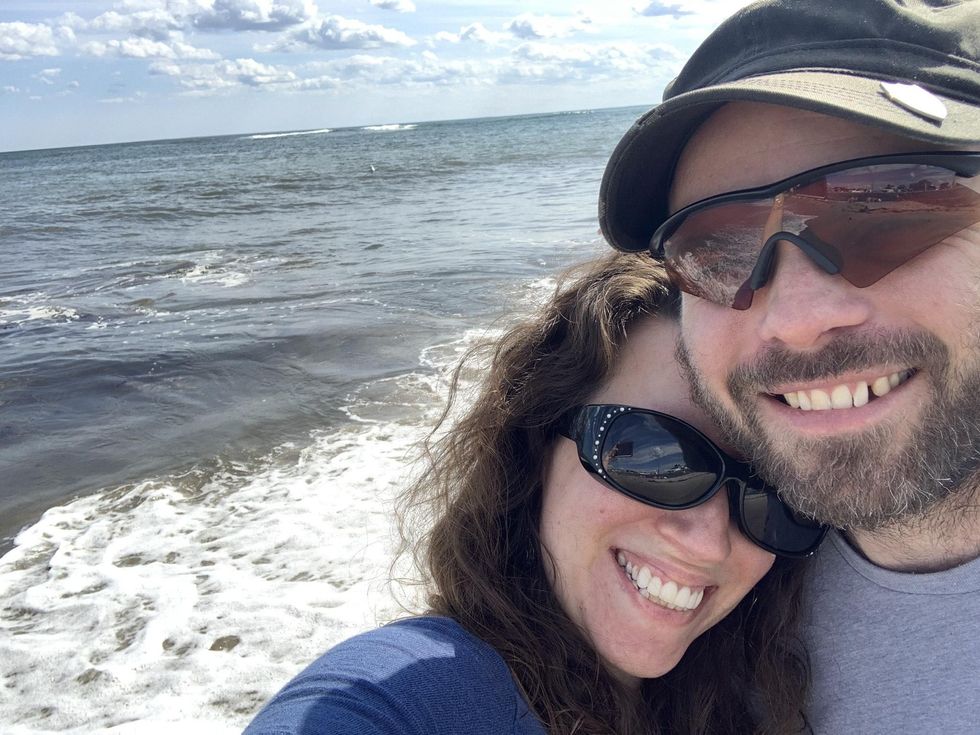
Summer 2021
But over time, his asthma — which is likely connected to his exposure to burn pits while serving in combat in Iraq — started to encroach on our lives. I’d slowly taken on the lion’s share of the yard work and got comfortable using a lawnmower in our hilly yard. Raking and bagging leaves became a form of meditation even as blisters developed on my hands. Lee would help until an asthma attack would send him back inside. Eventually, it got to the point where he wouldn’t try to help at all.
Lee’s hospital stay was a wake-up call to us both: We could no longer treat his asthma as an isolated attack to cope with and move on from. Instead, it was going to be our constant companion, and it would affect my life in a way I could never fully prepare for.
I stopped going into the office first thing in the morning and now wait until Lee gets through the worst of his morning fits. I work from home when I can and come home early when he’s having a particularly bad day. Nearly every night, I wake up to help him through an attack. Even if he can handle it himself, I keep my hand on his back where I can feel his heartbeat to confirm it’s still steady.
“I’m sorry,” Lee tells me frequently. “You didn’t sign up for this.” I tell him that there is no need to apologize; I know he would do the same for me. But it is also hard not to be resentful of each other sometimes: Me for the life we used to have and him for having to rely so heavily on his wife. I use my commute to the office to let these feelings out, to shout them in my car and to cry if I need to. I try not to show too much sadness in front of Lee because it has been difficult for him to come to terms with his illness, and he doesn’t need to deal with my feelings on top of his own. When I am out of the house, I fight down occasional bouts of panic as I imagine him collapsing and not being able to help him.
One of the most difficult parts about becoming a caregiver in my 30s is that it is so hard to find people my age who are going through the same thing. Many caregiver support services are directed at people who are much older, who had decades with their spouses before they had to take on this role. And my friends in their 30s try, but they can’t fully relate: They’re out climbing mountains or skiing with their spouses while the activity we do together the most is watching TV while on our respective devices.

2021
Our plans for the future, once filled with camping trips and travel, are beset with new complications. How would we power a nebulizer in the deep woods? What would happen if Lee collapsed and emergency services couldn't reach him in time? Lee has encouraged me to plan those trips with friends, to leave him behind. But I don’t because I can’t let go of the image of the two of us doing these things together.
What keeps us going is hope that things will get better. There are still treatments Lee is working with his doctors on trying and more research being done into his condition. We’re slowly replacing our physical hobbies with more stationary ones like cooking and gaming. When he wraps me in his arms to dance in the kitchen, I try to ignore the coughing fit that follows. We can still be us, even if his illness is there along with us. I just need to get better at remembering that.
Resources
- Who Is Caring for the Caregivers? ›
- Are You a Caregiver Neglecting Yourself? You're Not Alone ›
- Caregivers Need Self Care, Too ›
- Covid Family Caregivers Need Our Support - HealthyWomen ›
- Grief and Loss Are Different When You’re the Caregiver - HealthyWomen ›

